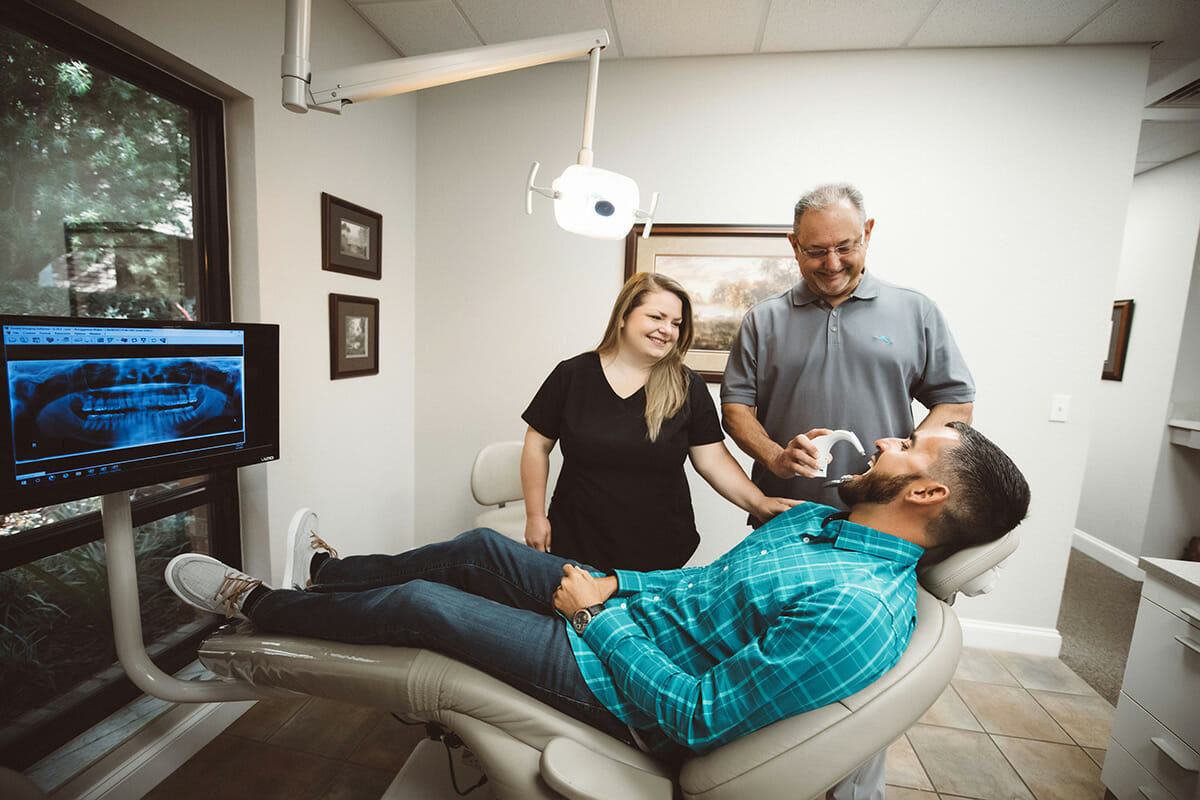Periodontal Disease Treatment

What Is Periodontal Disease?
Periodontal disease is the technical term for gum disease. Many types of gum diseases exist, which can range in severity. The most common type of gum disease is gingivitis. This disease occurs when the plaque that forms on the surface of the teeth starts to push deep into the gums. Plaque can be a hotbed for various bacteria which can become trapped under the gumline. When this happens, the gums become inflamed and red and can start pulling away from the tooth.
Other times, gum disease is present under the gumline and can go undetected. Bacteria can enter the gums below the visible part of the tooth, creating small pockets. These pockets can then fill with bacteria and cause infections below the surface of the tooth.
What Are Signs of Possible Periodontal Disease?
Early detection is key to stopping gum disease from spreading further. By recognizing the early signs and symptoms of possible gum disease, you will be able to stop the progression of the disease, and in some cases, reverse it.
Some common signs of gum disease can include:
- Swollen and puffy gums
- Red gums
- Bleeding gums when brushing or flossing
- Gumline receding or pulling away from teeth
Keeping a close eye on your gum health can help you notice changes as soon as they happen. If you start to see symptoms of possible gum disease, be sure to schedule an appointment with Dr. Crosby for further evaluation and treatment. Getting ahead of gum disease as soon as possible is always the best recipe for success.
What Are Treatment Options?
Treatment options will vary depending on the type and severity of your gum disease. For some with mild gum disease, simply changing oral hygiene habits is enough to significantly improve and reverse early disease effects. For other cases, more specialized treatments may be required.
Sometimes scaling and root planing is enough to remove plaque and bacteria from the tooth that is causing gum disease. This process involves gently scraping the tooth’s surface and then refinishing and reshaping the roots of the tooth to eliminate pockets of bacteria and promote healthy gum growth. Root planing can often encourage receding gums to grow back to a healthy gumline that will protect the teeth.
How Can I Fight Periodontal Disease Between Appointments?
While periodontal disease is sometimes entirely hereditary, many cases of gum disease are related to poor oral hygiene. As plaque and food debris build up on teeth, bacteria begin to form, irritating the gums and causing possible infections. If left untreated, gum disease can spread throughout the mouth and can even cause jawbone decay in severe cases. Practicing good cleaning habits will help prevent periodontal disease from developing.
The best way to treat gum disease is to prevent it from forming in the first place. Always brush your teeth twice per day. Remember to use a soft-bristled brush, and don’t press too hard on the teeth. When brushing, be sure to use circular motions extending down into the gumline to give the gums a healthy massage. Floss at least once per day and clean between and around each tooth to remove plaque and possible bacteria. By practicing healthy habits each day at home, you can successfully fight periodontal disease between your exams.
Crosby Dentistry is happy to help you understand more about your oral health. To schedule an appointment or to speak with our team about any possible gum health symptoms you’ve noticed, don’t hesitate to call our office.
